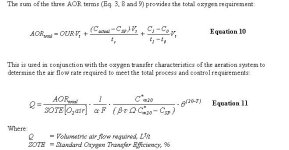Thanks for all replys to my previous post.Very helpfull.Ive managed to tune all the loops for liquid level control.
Im still struggling though trying to tune one of the loops.Im trying to tune a loop controling dissolved oxygen in an oxidation ditch. PV is the measured DO and the output of the loop is controlling a variable speed air blower.Ive tried tuning it as with the other loops but there is a large lag in response and as result the blower speed is hunting from 0-100% whatever I try.The trial and error method is now quite exhausted.Should I be using just PI or would PID be better? also how do I get round this delay time?
Im still struggling though trying to tune one of the loops.Im trying to tune a loop controling dissolved oxygen in an oxidation ditch. PV is the measured DO and the output of the loop is controlling a variable speed air blower.Ive tried tuning it as with the other loops but there is a large lag in response and as result the blower speed is hunting from 0-100% whatever I try.The trial and error method is now quite exhausted.Should I be using just PI or would PID be better? also how do I get round this delay time?






